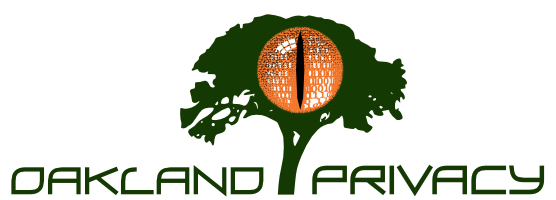by Mike Katz-Lacabe
We recently obtained and reviewed cell site simulator (CSS) logs from a number of police departments to see what we could learn about how they are used. Cell site simulators, frequently referred to as stingrays, are devices used by law enforcement that impersonate cell phone towers and can be used to track the location of a specific cellular device, usually a cell phone.
Press Coverage: Gizomodo
The San Jose Police Department has a Harris Hailstorm CSS that it purchased in 2013 and used its CSS 42 times in 2018, 43 times in 2019, and 23 times in 2020 as of August 4, 2020.
ke most police departments that have purchased this expensive equipment, the San Jose Police Department claimed that the equipment would be critical for investigating and tracking terrorists. In a 2012 proposal to the Bay Area Urban Areas Security Initiative requesting grant funding for the purchase, the San Jose Police stated, “It will also allow law enforcement to investigate and apprehend terrorists while they are conspiring to commit a terrorist act or after they have engaged in a terrorist act…This project will procure the technology and make it available at a moment’s notice to prevent and disrupt terrorist attacks which will protect both people and the critical infrastructure and key resources.” However, when we reviewed how police departments used their CSS, it was for regular crimes. There was no indication that San Jose or Anaheim had used their CSS for investigating or apprehending terrorists.
Most of the time (103/108) the CSS was used for San Jose Police Department cases. It was used four times for the Daly City Police Department, once for the San Mateo County District Attorney, and once for the Gilroy Police Department.
Overall, the CSS was used more than 60% of the time for suspects in robberies, attempted murder or murder. The following tables summarizes the top ten uses of the San Jose Police Department’s cell site simulator.
| # of times | Description | Reason |
| 31 | Robbery | PC 211 |
| 29 | Murder | PC 187 |
| 10 | Assault with deadly weapon | PC 245 |
| 6 | Attempted murder/murder | PC 646/187 |
| 5 | Rape | PC 261 |
| 5 | Criminal threat | PC 422 |
| 4 | Lewd/lascivious acts with minor | PC 288 |
| 3 | Burglary | PC 459 |
| 3 | Stalking | PC 646.9 |
| 3 | Discharging firearm at inhabited dwelling | PC 246 |
In contrast, the Anaheim Police Department focused on drugs cases, with 175 uses of its CSS for the Drug Enforcement Administration (DEA) SWBG2 (believed to be Southwest Border Group) from 2018 to July 23, 2020. The next most frequent use was for Los Angeles DEA (34), FPD Narcs (possibly Fontana Police Department Narcotics) at 30, something listed as TFG2 (23) followed by Riverside Police Department (20), FPD (19), Los Angeles High Intensity Drug Trafficking Area (HIDTA) at 9 and Riverside Sheriffs Office at 5. Anaheim Police also logged use of its CSS for Milwaukee DEA, New York DEA, and Portland HSI/DEA.
The Anaheim Police Department used its Harris CSS 86 times in 2018, 196 times in 2019, and 109 times in 2020 as of July 23, 2020. Unlike San Jose, Anaheim’s focus was largely related to drugs; it was used for locating robbery and murder suspects less than 7% of the time.
| # of times | Description | Reason |
| 153 | Intent to sell controlled substances | HS 11351/HS 11352 |
| 69 | Intent to sell/transport methamphetamine | HS 11378/HS 11379 |
| 54 | Possess more than $100,000 from sale or intent to purchase controlled substances | HS 11370.6 |
| 22 | Murder | PC 187 |
| 16 | Money laundering | HS 11370.6/HS 11370.9 |
| 10 | Selling/transporting cocaine, heroin, opiates | HS 11370.6/HS 11352 |
| 7 | Robbery | PC 211 |
| 6 | Possession of controlled substances | HS 11351 |
| 4 | Evading police officer | VC 2800.2 |
| 4 | Lewd/lascivious acts with minor suspects | PC 288 |
| 3 | Burglary | PC 459 |
The Anaheim Police Department will soon be replacing its CSS with a new $755,000 CSS from Tactical Support Equipment, authorized by the City Council at its June 9, 2020, meeting. The staff report states, “The service contract with the existing manufacturer [Harris] ends in June 2020 and at that time the manufacturer will no longer support the existing equipment, rendering it obsolete.”
Source documents: San Jose cell site simulator logs
